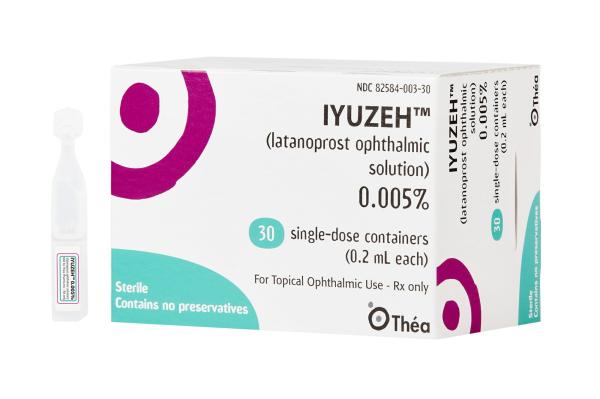Latanoprost Ophthalmic Side Effects
Medically reviewed by Drugs.com. Last updated on Feb 5, 2024.
Applies to latanoprost ophthalmic: ophthalmic emulsion, ophthalmic solution.
Serious side effects
Along with its needed effects, latanoprost ophthalmic may cause some unwanted effects. Although not all of these side effects may occur, if they do occur they may need medical attention.
Check with your doctor immediately if any of the following side effects occur while taking latanoprost ophthalmic:
More common
- eye pain or stinging
Less common
- decreased vision
- painful irritation of the clear front part of the eye
- swelling or redness of the eye and the lining of the eyelid
Incidence not known
- arm, back, or jaw pain
- blistering, peeling, or loosening of the skin
- blurred vision or other change in vision
- burning, dry, or itching eyes
- chest pain or discomfort
- chest tightness or heaviness
- chills
- cough
- diarrhea
- difficulty breathing
- discharge, excessive tearing
- fast, irregular, pounding, or racing heartbeat or pulse
- itching
- joint or muscle pain
- noisy breathing
- red skin lesions, often with a purple center
- sensitivity of the eye to light
- sore throat
- sores, ulcers, or white spots in the mouth or on the lips
- tearing
- unusual tiredness or weakness
Other side effects
Some side effects of latanoprost ophthalmic may occur that usually do not need medical attention. These side effects may go away during treatment as your body adjusts to the medicine. Also, your health care professional may be able to tell you about ways to prevent or reduce some of these side effects.
Check with your health care professional if any of the following side effects continue or are bothersome or if you have any questions about them:
More common
- drainage from the eyes
- longer and thicker eyelashes
Less common
- eyelash discoloration
- feeling of having something in the eye
Incidence not known
- darkening of the eyelid skin color
- dizziness
- headache
For healthcare professionals
Applies to latanoprost ophthalmic: ophthalmic emulsion, ophthalmic solution.
General
The most commonly reported side effect was increased iris pigmentation.[Ref]
Respiratory
- Common (1% to 10%): Upper respiratory tract infection/cold/flu, bronchitis
Very are (less than 0.01%): Asthma and exacerbation of asthma, dyspnea[Ref]
Musculoskeletal
Cardiovascular
- Very rare (less than 0.01%): Aggravation of angina in patients with pre-existing disease, chest pain
- Postmarketing reports: Palpitations[Ref]
Dermatologic
- Common (1% to 10%): Rash, allergic skin reaction
- Postmarketing reports: Toxic epidermal necrolysis, eyelid skin darkening[Ref]
Nervous system
- Postmarketing reports: Dizziness, headache[Ref]
Ocular
- Very common (10% or more): Iris pigmentation (33%), foreign body sensation (13%), punctate epithelial keratopathy (10%), eye irritation
- Common (1% to 10%): Stinging, conjunctival hyperemia, blurred vision, itching, burning, increased pigmentation of the iris, excessive tearing, lid discomfort/pain, dry eye, eye pain, lid crusting, lid erythema, photophobia, lid edema, blepharitis
- Uncommon (0.1% to 1%): Keratitis
- Rare(less than 0.1%): Distichiasis
- Postmarketing reports: Eyelash/vellus hair changes (increased length, thickness, pigmentation, and number), corneal edema/erosions, intraocular inflammation (iritis/uveitis), macular edema (including cystoid macular edema), misdirected eyelashes, periorbital and lid changes resulting in deepening of the eyelid sulcus[Ref]
Genitourinary
- Common (1% to 10%): Urinary tract infection[Ref]
Hepatic
- Common (1% to 10%): Abnormal liver function[Ref]
Immunologic
- Postmarketing reports: Herpes keratitis[Ref]
References
1. (2001) "Product Information. Xalatan (latanoprost ophthalmic)." Pharmacia and Upjohn
2. Cerner Multum, Inc. "UK Summary of Product Characteristics."
3. Cerner Multum, Inc. "Australian Product Information."
Frequently asked questions
More about latanoprost ophthalmic
- Check interactions
- Compare alternatives
- Pricing & coupons
- Reviews (69)
- Dosage information
- During pregnancy
- Drug class: ophthalmic glaucoma agents
- Breastfeeding
- En español
Patient resources
- Latanoprost ophthalmic drug information
- Latanoprost (Advanced Reading)
- Latanoprost Eye Drops (Emulsion)
- Latanoprost Eye Drops (Solution)
Other brands
Professional resources
Other brands
Related treatment guides
Further information
Latanoprost ophthalmic side effects can vary depending on the individual. Always consult your healthcare provider to ensure the information displayed on this page applies to your personal circumstances.
Some side effects may not be reported. You may report them to the FDA.

